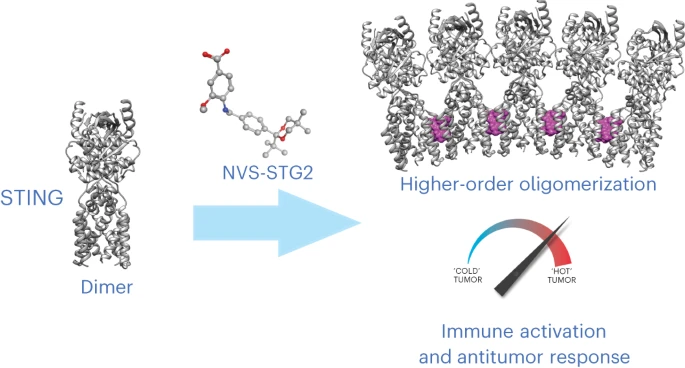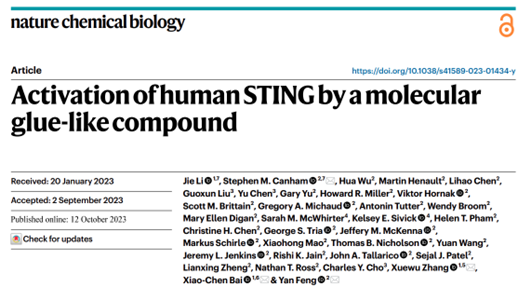How BLD Helps
NVS-STG2: A Molecular Glue-like Compound Opens a New Pathway for STING Activation
30 April 2024

4-((4-(2-(tert-Butyl)-5,5-dimethyl-1,3-dioxan-2-yl)benzyl)amino)-3-methoxybenzoic acid

STING (stimulator of interferon genes) is a dimeric transmembrane protein residing on the endoplasmic reticulum membrane. The discovery of agonists of the STING pathway has been an area of intense research due to their potential to enhance innate immune response and tumor immunogenicity in the context of immuno-oncology therapy. Scientists from the University of Texas Southwestern Medical Center, in collaboration with Novartis, co-authored a paper titled "Activation of human STING by a molecular glue-like compound", which has been published in the journal "Nature Chemical Biology".

The research team conducted screening and identification on a specific compound library, ultimately identifying a lead compound. Through structural modification and chemical refinement, a more potent compound, NVS-STG2, was obtained. NVS-STG2 effectively serves as a molecular glue, strengthening the interface between two STING dimers, thereby promoting the higher-order oligomerization of human STING. The unique binding site of NVS-STG2 provides a new way to develop better STING agonists.
References
[1]https://www.nature.com/articles/s41589-023-01434-y
Prev: Indazole Derivatives
Next: Peptide Related Products